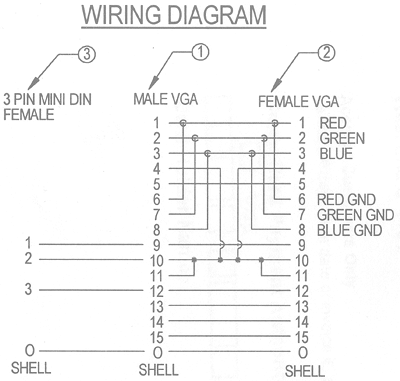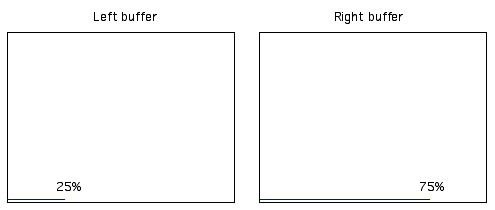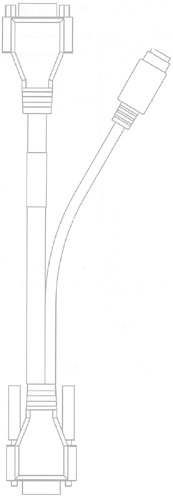The most common sync signal is a simple square wave at around 3 volts peak to peak and running at the same frequency as the frame sequential stereo, usually 120Hz for a flicker free effect. NVidia were perhaps the first card supplier to incorporate this into their drivers, they use pin 12 on the VGA connector for the sync signal. 
Source
/*
Draw a blue line on the last pixel row for poor mans stereo syncing
*/
void DrawBlueLine(int width,int height)
{
GLint i;
unsigned long buffer;
glPushAttrib(GL_ALL_ATTRIB_BITS);
glDisable(GL_ALPHA_TEST);
glDisable(GL_BLEND);
for (i=0;i<6;i++)
glDisable(GL_CLIP_PLANE0 + i);
glDisable(GL_COLOR_LOGIC_OP);
glDisable(GL_COLOR_MATERIAL);
glDisable(GL_DEPTH_TEST);
glDisable(GL_DITHER);
glDisable(GL_FOG);
glDisable(GL_LIGHTING);
glDisable(GL_LINE_SMOOTH);
glDisable(GL_LINE_STIPPLE);
glDisable(GL_SCISSOR_TEST);
glDisable(GL_STENCIL_TEST);
glDisable(GL_TEXTURE_1D);
glDisable(GL_TEXTURE_2D);
glDisable(GL_TEXTURE_3D);
glDisable(GL_TEXTURE_CUBE_MAP);
for (buffer=GL_BACK_LEFT; buffer<=GL_BACK_RIGHT; buffer++) {
/* Will affect the last row on each buffer, left and right */
glDrawBuffer(buffer);
/* Set the viewport to the entire window */
glViewport(0,0,width,height);
glMatrixMode(GL_PROJECTION);
glPushMatrix();
glLoadIdentity();
glOrtho(0,glutGet(GLUT_WINDOW_WIDTH),0,glutGet(GLUT_WINDOW_HEIGHT),-1,1);
glMatrixMode(GL_MODELVIEW);
glPushMatrix();
glLoadIdentity();
/* Erase the last pixel row to black */
glColor3d(0.0,0.0,0.0);
glBegin(GL_LINES);
glVertex2i(0,0);
glVertex2i(width,0);
glEnd();
/*
Draw a line of the correct length
the cross over is about 40% across the screen from the left
*/
glColor3d(0.0,0.0,1.0);
glBegin(GL_LINES);
glVertex2i(0,0);
if (buffer == GL_BACK_LEFT)
glVertex2i(width/4,0);
else
glVertex2i(3*width/4,0);
glEnd();
glPopMatrix();
glMatrixMode(GL_PROJECTION);
glPopMatrix();
}
glPopAttrib();
}
|

